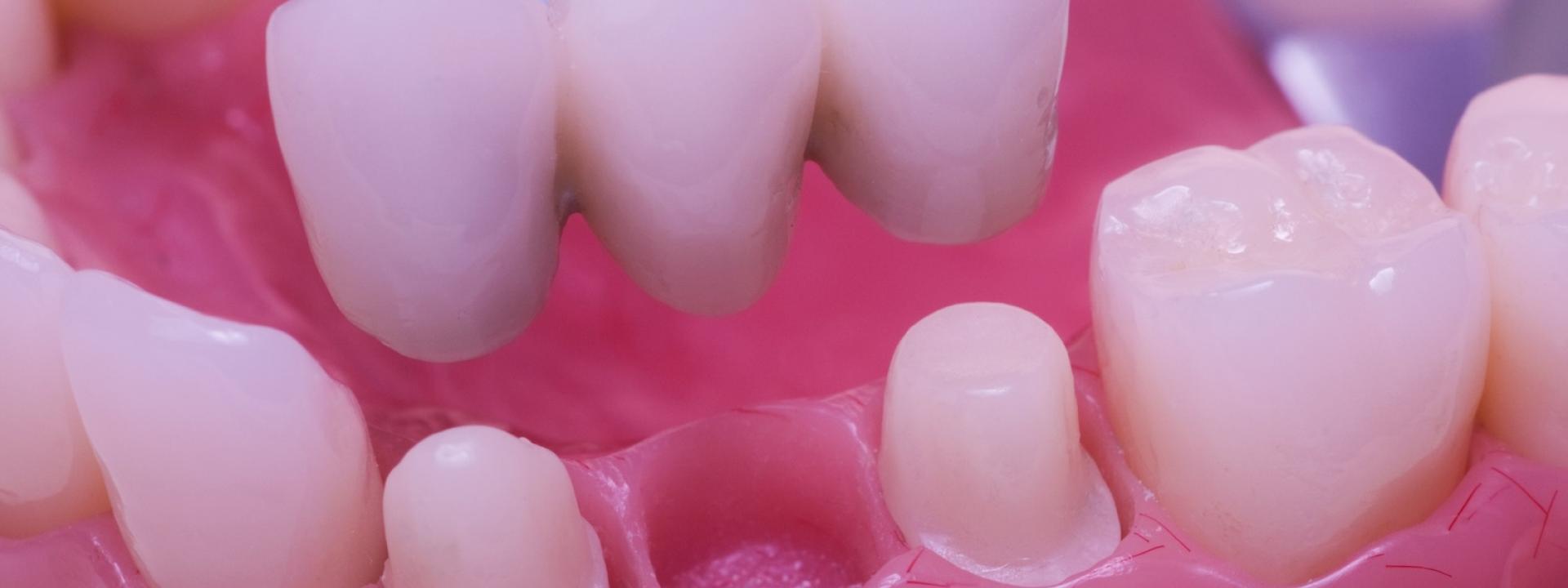A complete set of teeth plays an important role in maintaining ideal oral health. Each tooth contributes to ideal chewing, speeking, and a balanced bite. Missing teeth disrupt this delicate harmony. They can impact your ability to eat and speak effectively and lead to a misaligned bite, jaw problems, and even a sunken facial appearance.
Fortunately, Daniel Appel DDS can offer numerous solutions to address missing teeth. One of the most common and successful options is the dental bridge. As the name indicates, a dental bridge bridges gaps created by one or more missing teeth. It is fixed in place, improving the look of your smile, your ability to chew and your overall oral health.
Understanding the Parts of a dental Bridge
A dental bridge combines aesthetics and functionality to improve both smiles and oral health. To fully appreciate its effectiveness, let’s break down the key components that make it work.
The components of a dental bridge include:
- Abutment Teeth: These are the natural healthy teeth surrounding the gap created by a missing tooth (or teeth). The dentist shapes these teeth to create a strong foundation. Crowns, custom-made caps that resemble natural teeth, are then cemented onto these prepared abutment teeth. These crowns act as anchors, holding the entire bridge structure in place.
- Pontic(s): These are the artificial teeth that fill the space left by the missing tooth/teeth. They are typically made from durable materials like porcelain or zirconia and mimic natural teeth’ color and translucency for a seamless look.
The Bridgework Process: From Consultation to Completion
1) The Dentist performs a meticulous examination of your mouth, paying close attention to the missing tooth area and the surrounding teeth. X-rays are crucial at this stage, providing a clear picture of your jawbone health and the root structure of the abutment teeth. This comprehensive evaluation allows the dentist to discuss your treatment goals, concerns, and medical history in detail.
2) A custom treatment plan is created - this planning phase considers several critical factors, including the number and location of missing teeth, your bite pattern, jaw health, and your desired aesthetics.
3) Surgical alteration of the teeth - the abutment teeth are altered to form a solid foundation for the bridge. This preparation involves carefully removing a small amount of enamel and dentin from each abutment tooth. Local anesthesia is used throughout this process to ensure patient comfort. The amount of tooth reduction is minimal and ensures a proper fit for the crowns without compromising the structural integrity of the teeth.
4) Impressions - the exact shape of the teeth and tissues are captured in a soft vinyl impression material. The laboratory will use the impressions to make an exact copy of your tissues and teeth in stone. This will be used to make a bridge that will exactly fit your teeth and tissues.
5) Temporary crowns - With the abutment teeth prepared, the dentist create custom acrylic crowns to cover the shaped teeth. Once cemented in place they will keep the teeth comfortable, keep them from shifting into a new position, and return your teeth to the original shape until the new crowns can be placed. It’s important to treat these temporary crowns with care until the permanent bridge is ready for placement.
6) Final cementation - Finally, the day arrives for the permanent bridge to be placed. When the bridge arrives from the lab, the dentist will check its fit, color, and overall aesthetics. After ensuring everything meets your expectations, the dentist will carefully cement the bridge onto the prepared abutment teeth. This procedure is relatively painless and may involve minor adjustments for optimal comfort and bite function.
Benefits of Dental Bridges for Patients
A well-designed and placed dental bridge offers many advantages for patients seeking solutions for missing teeth.
Benefits of dental bridges include:
- A more beautiful smile: Missing teeth can significantly impact your smile’s appearance, potentially leading to feelings of self-consciousness. Dental bridges are natural-looking replacements, effectively filling the gaps and restoring a complete and aesthetically pleasing smile.
- Improved Chewing Ability: Missing teeth can make chewing a challenging and frustrating experience. The food might feel unevenly distributed in your mouth, and certain foods might become difficult to manage. Dental bridges restore chewing function by providing a stable surface for biting and grinding food.
- Clearer Speech: Missing teeth, particularly in the front of the mouth, can affect your speech clarity. Sounds like “s,” “f,” and “th” might become slurred or difficult to pronounce. Dental bridges bridge the gap (pun intended) and restore proper tongue placement, leading to clearer and more articulate speech.
- Prevents Shifting of Teeth: When a tooth (or teeth) is missing, the surrounding teeth tend to shift into the space to fill the gap. This shifting can lead to misalignment, crowding, and bite problems. Dental bridges prevent this unwanted movement by maintaining the space occupied by the missing tooth and keeping the remaining teeth in their proper positions.
- Maintains Facial Structure: Missing teeth, especially in the back of the mouth, can contribute to a sunken facial appearance. Dental bridges help maintain a natural facial structure by supporting the surrounding tissues and preventing them from collapsing inward.
- Contributes to Overall Oral Health: By preventing teeth from shifting and maintaining proper bite alignment, dental bridges contribute to better overall oral health. They also make it easier to maintain proper oral hygiene by allowing for easier cleaning in the areas previously occupied by the missing tooth.
Conclusion
Dental bridges play a vital role in replacing missing teeth, improving how our smile appears and overall health. They also restore confidence in your smile and improve chewing function and speech clarity. From initial consultation to final placement, the bridgework process is meticulous and ensures a comfortable and functional restoration.
Please give us a call at Daniel Appel DDS, (530) 533-7545, if you would like to discuss improving the function and beauty of your smile!

